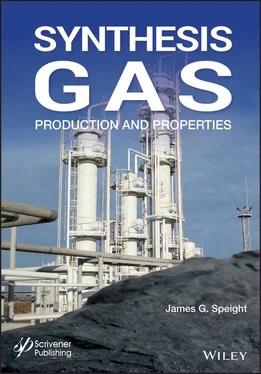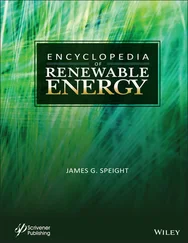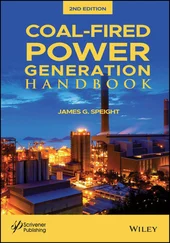In addition, commercial oil stocks in the United States have been at their lowest level in three decades. Total crude oil inventories, which include commercial and stocks in the Strategic Petroleum Reserve (SPR) are relatively low, in terms of daily coverage. Current commercial inventories are near the level at which spot shortages can occur. The past decade has seen scenarios in which the decline in commercial stocks is greater than the increase in the Strategic Petroleum Reserve, and the capacity of the Strategic Petroleum Reserve and commercial stocks to deal with a crisis is less than before the refilling program began (Williams and Alhajji, 2003). Moreover, the premature release of crude oil from the Strategic Petroleum Reserve can jeopardize national security in case of continued political problems in the oil-producing countries and weakens the ability of the United States to respond to real shortages.
Although some of the oil-importing countries have made progress in reducing their dependence on oil, the dependence of the United States on crude oil has increased in recent years from 38% of total energy consumption in 1995 to approximately 40% at the current time. This indicates two possible areas of concern regarding the extent to which crude oil influences energy security: (i) the increase in the crude oil share of energy use, and (ii) the inability or unwillingness of the United States to reduce dependence on imported oil.
It might be argued that the degree of dependence has no impact on energy security as long as foreign oil is imported form secure sources. However, if the degree of dependence on non-secure sources increases, energy security would be in jeopardy. In this case, vulnerability would increase and economic and national security of individual oil-importing countries would be compromised.
The percentage of imports from the top five suppliers can be used as a measure of the supply vulnerability to an interruption by one or more key suppliers. This is an important measure of the vulnerability of the United States to supply disruption because it shows the high level of import concentration by importing from few suppliers. The top five suppliers to oil-importing countries are Saudi Arabia, the Commonwealth of Independent States (former Soviet republics), Norway, Venezuela, and Mexico. The United States has a unique arrangement as well as location with Canada and Mexico but the political stability of Saudi Arabia is always open to discussion and question. In addition, problems in Venezuela underline the United States vulnerability to interruption from a major supplier. Venezuela has had severe problems and the potential for an interruption in oil supply always exist. Iraq crude has been off the market for several years (oil supply from Iraq is only just starting again) and conflict in Nigeria has significantly influenced oil output.
Another important measure of vulnerability is the share of world crude coming from the Gulf region. The Gulf region has been viewed historically as a politically unstable area. Incidents in the region led to the three energy crisis in 1973, 1979, and the two Gulf Wars. While a smaller share of imported oil from the Gulf producers means lesser vulnerability, it may increase vulnerability by having to rely on other sources, such as Venezuela. Whichever measure is used to assess energy dependence, the United States remains susceptible to an energy crisis because of the high dependence on imported oil. The United States has not made a significant reduction in dependence on imports since the mid-1980s and continues to import almost 70% of the total crude oil consumption.
The crude oil share in the total energy supply also reflects the dependence on crude oil by the United States. In recent years, however, this share has increased in the United States. Because of this, the United States is highly vulnerable to oil supply disruptions. Indeed, the possibility of energy crisis in the foreseeable future is greater than in previous years. Furthermore, the use of the Strategic Petroleum Reserve or government-controlled stocks to lessen the impact of an energy crisis is subject to debate. In fact, the premature release of oil stocks from the Strategic Petroleum Reserve may exacerbate an energy crisis as it depletes the stocks while shortages still exist since it can lead to stabilized (or even lower) prices and increased consumption (Alhajji and Williams, 2003).
Dependency and vulnerability to oil imports in the United States and, for that matter, in other oil-importing countries, can be reduced by diversification of suppliers and by energy diversification. In addition, diversification of suppliers has the potential to lower the relative impact of supply disruption on most countries. The political instability that swings back and forth in countries such as Venezuela, Nigeria, and Iraq emphasizes the need for diversification of suppliers and so removing the reliance on a small number of oil-producing countries.
The projections for the continued use of fossil fuels indicate that there will be at least another five decades of fossil fuel use (especially natural gas, crude oil, and coal) before biomass and other forms of alternate energy take hold. Furthermore, estimations that the era of fossil fuels (natural gas, crude oil, and coal) will be almost over when the cumulative production of the fossil resources reaches 85% of their initial total reserves may or may not have some merit. In fact, the relative scarcity (compared to a few decades ago) of crude oil was real but it seems that the remaining reserves make it likely that there will be an adequate supply of energy for several decades. The environmental issues are very real and require serious and continuous attention.
Synthesis gas (synthesis gas) fuel gas mixture consisting predominantly of carbon monoxide and hydrogen and is typically a product of a gasification. The gasification process is applicable to many carbonaceous feedstocks including natural gas, crude oil resids, coal, biomass, by reaction of the feedstock with steam (steam reforming), carbon dioxide (dry reforming) or oxygen (partial oxidation). Synthesis gas is a crucial intermediate resource for production of hydrogen, ammonia, methanol, a variety of chemicals, as well as synthetic hydrocarbon fuels.
Thus, as the reserves of natural gas, crude oil, and other forms of conventional energy are depleted, there will be the need to seek other sources, some of which are outlined in the previous sections.
Energy production such as electricity production or combined electricity and heat production remain the most likely area for the application of gasification or co-gasification. The lowest investment cost per unit of electricity generated is the use of the gas in an existing large power station. This has been achieved in several large utility boilers, often with the gas fired alongside the main fuel. This option allows a comparatively small thermal output of gas to be used with the same efficiency as the main fuel in the boiler as a large, efficient steam turbine can be used. It is anticipated that addition of gas from a biomass or wood gasifier into the natural gas feed to a gas turbine will be technically possible but there will be concerns as to the balance of commercial risks to a large power plant and the benefits of using the gas from the gasifier.
Furthermore, the disposal of municipal and industrial waste has become an important problem because the traditional means of disposal, landfill, are much less environmentally acceptable than previously. Much stricter regulation of these disposal methods will make the economics of waste processing for resource recovery much more favorable. One method of processing waste streams is to convert the energy value of the combustible waste into a fuel. One type of fuel attainable from waste is a low heating value gas, usually 100 to 150 Btu/scf, which can be used to generate process steam or to generate electricity. Co-processing such waste with coal is also an option (Speight, 2008, 2013, 2014b).
Читать дальше












